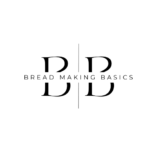This site may contain affiliate links to products. We may receive a commission for purchases made through these links.
Baking bread is a time-honored tradition that brings warmth and comfort to our homes. The process of transforming simple ingredients into a fragrant, golden loaf can be both rewarding and therapeutic. If you’re a beginner looking to embark on your bread-making journey, understanding the basic principles will set you on the path to success. In this blog, I will explore the fundamental principles of baking bread, equipping you with the knowledge needed to create homemade loaves that are sure to impress.
Quality Ingredients: The foundation of any great bread lies in using quality ingredients. Start with good flour, such as bread flour or all-purpose flour, which contain the right amount of protein to develop gluten. Fresh yeast or active dry yeast is essential for leavening the dough. Additionally, using filtered water and high-quality salt will enhance the flavor and texture of your bread.
The Role of Gluten: Gluten, a protein found in wheat flour, is crucial for giving bread its structure and texture. When combined with water and kneaded, gluten forms an elastic network that traps air bubbles, allowing the bread to rise. Kneading activates gluten development, ensuring a light and airy crumb. Proper gluten development is achieved through adequate kneading or mixing, allowing the dough to rise, and careful shaping.
The Art of Fermentation: Fermentation is a key process in bread making that involves the action of yeast or sourdough cultures. Yeast consumes the sugars in the dough and produces carbon dioxide, causing the bread to rise. Sourdough starter, on the other hand, harnesses wild yeast and bacteria, imparting unique flavors and improving digestibility. Allowing the dough to ferment at the right temperature and for the appropriate duration develops complex flavors, improves texture, and aids in digestion
Understanding Dough Consistency: Achieving the right consistency of the dough is crucial for successful bread making. The hydration level, or the amount of water in proportion to flour, greatly influences the texture and crumb of the bread. Sticky dough requires more flour, while dry dough benefits from additional water. Paying attention to the dough’s feel and adjusting accordingly ensures optimal results.
The Power of Proper Proofing: Proofing refers to the final rise of the shaped dough before baking. It allows the dough to relax, develop flavor, and complete the fermentation process. The time and temperature for proofing depend on the type of bread, ambient conditions, and desired results. Underproofed bread may be dense and lacking in flavor, while overproofed bread can become flat and lose structure. Observing the dough’s volume, texture, and poke test will help determine the right moment to bake.
Oven and Baking Techniques: Preheating the oven and baking bread at the appropriate temperature are vital for achieving a crisp crust and well-baked interior. Steam is crucial during the initial stages of baking as it aids in crust formation and adds moisture, resulting in a beautiful golden crust. Techniques like scoring the dough, which involves making shallow cuts on the surface, allow controlled expansion and give the bread an attractive appearance.
Baking bread is a journey of discovery, creativity, and patience. By grasping the basic principles above, you are well-equipped to embark on your bread-making adventure. Remember, practice, observation, and experimentation will refine your skills over time. With dedication and an understanding of quality ingredients, gluten development, fermentation, and proper proofing and baking techniques, you’ll soon be able to craft homemade loaves that will delight your senses and those of your loved ones. So, roll up your sleeves, embrace the flour-dusted countertop, and let the wonderful world of bread making unfold before you.
